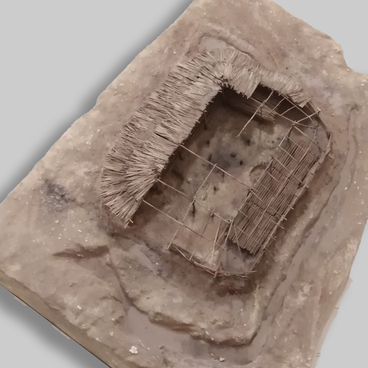Shulgan-Tash cave, which is also called Kapova, is a natural monument on the territory of Bashkortostan.
Similar caves are found only in Europe — Altamira and Lascaux in the Franco-Cantabrian region. The Franco-Cantabrian region is the region in northern Spain across to Provence in southeastern France.
Pyotr Rychkov whose work was published in 1760, was the first to document and explore the Shulgan-Tash cave. It gained worldwide fame after employees of the Bashkir State Reserve discovered ancient drawings in 1959. A comprehensive study began in 1960 under the direction of Professor Otto Bader. His expedition, which worked intermittently until 1978, discovered, cleared, and recorded five dozen images. The scientist tentatively dated the entire complex by stylistic analogies with Western European sites to the end of Solutre — an era that ended 15 thousand years BC. Vyacheslav Shchelinsky was able to more accurately determine the age of the drawings. 170 m from the entrance, near the ancient drawings of the Hall of Signs on an area of 68 meters, he studied the remains of the main site of the contemporaries of these images. Several dates were obtained from charcoal from the cultural layer — from 39 to 13 thousand years ago.
Recent studies of the Kapova Cave by archaeologists have shown that the painting of the Kapova Cave is represented by several hundreds of various realistic, stylized drawings and complex abstract images.
The drawings are made with red paint — ocher. Ocher is one of the natural pigments, clay with mineral oxides. The ocher was ground, animal fat and calcide were added. Pieces of ocher from the Shulgan-Tash cave and the stone on which ocher was ground in antiquity are kept in the National Museum of the Republic of Bashkortostan. Analysis of the images shows the presence of complex compositions reflecting a sufficiently developed mythology.
The ancient inhabitants of the caves lit up their dwellings. They used a fragment of a calcite drip as a container for fire. It forms when salts dissolved in water slowly crystallize in places where droplets seep through the vaults of a cave. One of such ancient lamps was discovered by archaeologists in the Shulgan-Tash cave in the early 2000s. The lamp was located, together with pieces of ocher and coals, in the crevice of one of the halls of the cave. The lamp was used by the ancient artist to consecrate the hall, apparently it was forgotten during the work. On the reverse side of the item, when examined under a microscope, fingerprints were found — red spots of ocher.
Pyotr Rychkov whose work was published in 1760, was the first to document and explore the Shulgan-Tash cave. It gained worldwide fame after employees of the Bashkir State Reserve discovered ancient drawings in 1959. A comprehensive study began in 1960 under the direction of Professor Otto Bader. His expedition, which worked intermittently until 1978, discovered, cleared, and recorded five dozen images. The scientist tentatively dated the entire complex by stylistic analogies with Western European sites to the end of Solutre — an era that ended 15 thousand years BC. Vyacheslav Shchelinsky was able to more accurately determine the age of the drawings. 170 m from the entrance, near the ancient drawings of the Hall of Signs on an area of 68 meters, he studied the remains of the main site of the contemporaries of these images. Several dates were obtained from charcoal from the cultural layer — from 39 to 13 thousand years ago.
Recent studies of the Kapova Cave by archaeologists have shown that the painting of the Kapova Cave is represented by several hundreds of various realistic, stylized drawings and complex abstract images.
The drawings are made with red paint — ocher. Ocher is one of the natural pigments, clay with mineral oxides. The ocher was ground, animal fat and calcide were added. Pieces of ocher from the Shulgan-Tash cave and the stone on which ocher was ground in antiquity are kept in the National Museum of the Republic of Bashkortostan. Analysis of the images shows the presence of complex compositions reflecting a sufficiently developed mythology.
The ancient inhabitants of the caves lit up their dwellings. They used a fragment of a calcite drip as a container for fire. It forms when salts dissolved in water slowly crystallize in places where droplets seep through the vaults of a cave. One of such ancient lamps was discovered by archaeologists in the Shulgan-Tash cave in the early 2000s. The lamp was located, together with pieces of ocher and coals, in the crevice of one of the halls of the cave. The lamp was used by the ancient artist to consecrate the hall, apparently it was forgotten during the work. On the reverse side of the item, when examined under a microscope, fingerprints were found — red spots of ocher.



